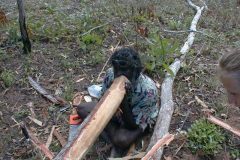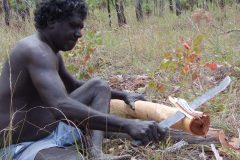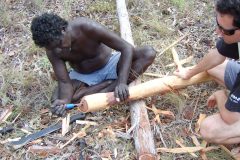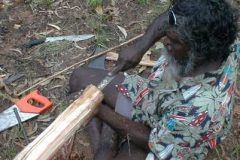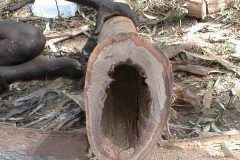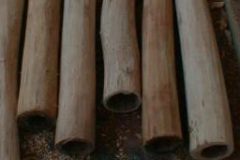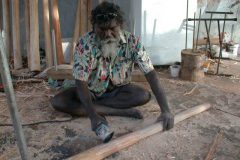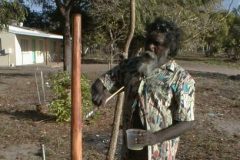
How is a Yiḏaki Made? Part 2
Many didjeridus in Australia and around the world have yellow beeswax added to form a mouthpiece, usually because the mouthpiece end of the instrument is too large or uncomfortable to play. Yolŋu prefer trees with a natural conical bore provided by the termites, so that the mouthpiece can be shaped from the wood rather than beeswax. The Top End of Australia doesn’t even have bees that make accessible yellow wax. Native bees here mix their wax with tree resin to make a black or brown gummy substance called gunydju which Yolŋu use as a fixative. Sometimes this is used to shape mouthpieces a bit, but is only extremely rarely used for large built-up mouthpieces as you will see done with yellow beeswax elsewhere.
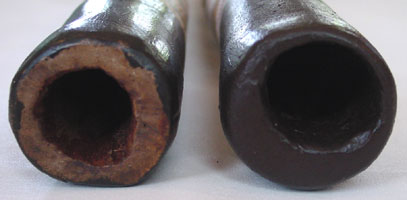
Older yidaki made from Gunga (Pandanus yirrkalaensis) and bamboo are also known. Milkayŋu Munuŋgurr called the pandanus instrument the ideal yidaki because of its extreme light weight and full sound. It however is not naturally hollow, so can be labour intensive to craft, and due to the softness of the wood, must be kept very wet while playing to maintain its solidity and full sound. These instruments are not made anymore, but the knowledge remains.

